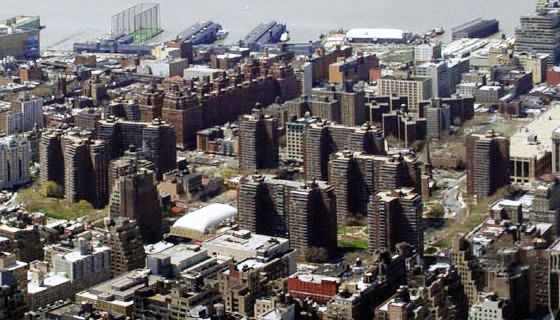At the very beginning of the chapter, a complaint is expressed about the tower in the park public housing that exists in New York City and most other cities in America. I personally don’t mind that urban residential buildings are not aesthetically pleasing. That isn’t the point of them. Nobody comes to the city to look at the housing. The people who live here don’t even look at the housing. It’s all about the commercial areas and the tourist sites. In a suburban setting, the appearance of housing developments is more important because there isn’t much else to look at. In the city, people go home to sleep and that’s it. More attractive buildings wouldn’t bring more people here or change anyone’s opinion of the city because it’s not what they’re here to see in the first place. These buildings serve their purpose of providing plentiful and affordable housing, and that’s all that matters.
In addition, Bloom points out that these high rises provide anonymity. This is something that I view positively. Cities don’t have the atmosphere that requires everyone to know each other. People often come to New York City to fall into the crowd and not be watched constantly anyway. I think it’s nice to be able to go home and have privacy. There’s no pressure to see other people or interact with anyone. After a long day, you can just make the trek home and enjoy the rest of your night.
Later on in the reading, Bloom says that Moses’s developments “paired middle-income projects with public housing in many low-income neighborhoods” (133). This is considered to be good planning, but I don’t really see why. I could foresee a lot of social stigma against middle-income people living in low-income neighborhoods. Why would they want to live there? Why would people of either income level feel comfortable in such close proximity of the other? Across New York City, most of the population believes that certain income levels pertain to certain neighborhoods (which may or may not be true), and I don’t think those boundaries are going to break anytime soon. In general, it seems that people like to be around others who are within the same income level. If this actually became a concrete initiative—to mix socioeconomic classes—I’m not sure if it would work too well.
An issue with public housing that Bloom mentions is that it displaced a lot of stores. This made me wonder if New York City could change its general layout. Currently, each neighborhood is practically self-sufficient because it has housing and stores to service residents. What if there were sections of the city reserved for housing and other sections reserved for stores? That would destroy the concept of small communities, but I’m curious to know if it would work. It might make the city less urban, since it basically imitates the model of a small town where everyone lives in certain areas and there’s a centralized space for businesses, but the city is so big that I think it could work out just fine. We would never reach the point where everyone knows each other, so it would probably feel just like it does now.
Nonetheless, there isn’t exactly anything wrong with what we have now. The NYCHA has done a fantastic job with clearing slums and creating better housing across the city. There might have been unfortunate consequences here and there, but that always happens to some extent. Compared to other cities, as Bloom says, New Yorkers are much better off when it comes to their housing. There’s probably room for improvement, but there isn’t anything necessarily wrong with what currently exists. However, there’s still a negative connotation when it comes to the projects. Under ideal circumstances, that would no longer be in effect. This is what we need to combat now. We’ve learned how to successfully create housing, so we can now focus on eradicating the bad perceptions that people have of it.


